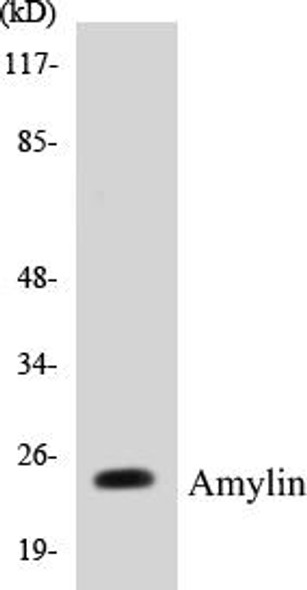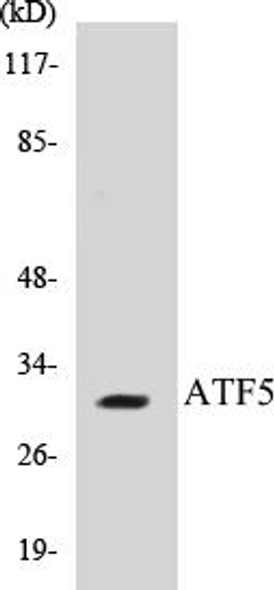Description
E2F1 Colorimetric Cell-Based ELISA Kit
The E2F1 Colorimetric Cell-Based ELISA Kit from Assay Genie is a cutting-edge tool designed for the accurate detection of E2F1 levels in cell lysates, tissue homogenates, and other biological samples. This kit offers exceptional sensitivity and specificity, allowing for reliable and reproducible results in a variety of research settings.E2F1 is a key transcription factor that regulates genes involved in cell cycle progression, apoptosis, and differentiation. Dysregulation of E2F1 has been implicated in various diseases, including cancer, making it a critical target for investigation and potential therapeutic interventions.
By utilizing the Assay Genie E2F1 Colorimetric Cell-Based ELISA Kit, researchers can gain valuable insights into the role of E2F1 in cellular processes and disease pathogenesis, ultimately advancing our understanding of complex biological mechanisms and paving the way for innovative treatment strategies.
| Product Name: | E2F1 Colorimetric Cell-Based ELISA Kit |
| Product Code: | CBCAB00629 |
| ELISA Type: | Cell-Based |
| Target: | E2F1 |
| Reactivity: | Human, Mouse |
| Dynamic Range: | > 5000 Cells |
| Detection Method: | Colorimetric 450 nmStorage/Stability:4°C/6 Months |
| Format: | 96-Well Microplate |
The E2F1 Colorimetric Cell-Based ELISA Kit is a convenient, lysate-free, high throughput and sensitive assay kit that can detect E2F1 protein expression profile in cells. The kit can be used for measuring the relative amounts of E2F1 in cultured cells as well as screening for the effects that various treatments, inhibitors (ie siRNA or chemicals), or activators have on E2F1.
Qualitative determination of E2F1 concentration is achieved by an indirect ELISA format. In essence, E2F1 is captured by E2F1-specific primary antibodies while the HRP-conjugated secondary antibodies bind the Fc region of the primary antibody. Through this binding, the HRP enzyme conjugated to the secondary antibody can catalyze a colorimetric reaction upon substrate addition. Due to the qualitative nature of the Cell-Based ELISA, multiple normalization methods are needed:
| 1. | A monoclonal antibody specific for human GAPDH is included to serve as an internal positive control in normalizing the target absorbance values. |
| 2. | Following the colorimetric measurement of HRP activity via substrate addition, the Crystal Violet whole-cell staining method may be used to determine cell density. After staining, the results can be analysed by normalizing the absorbance values to cell amounts, by which the plating difference can be adjusted. |
| Database Information: | Gene ID: 1869, UniProt ID: Q01094, OMIM: 189971, Unigene: Hs.654393 |
| Gene Symbol: | E2F1 |
| Sub Type: | None |
| UniProt Protein Function: | E2F1: a member of the E2F/DP family of transcription factors.The E2F family plays a crucial role in the control of cell cycle and action of tumor suppressor proteins and is also a target of the transforming proteins of small DNA tumor viruses. Binds DNA cooperatively with Dp transcription factors in the promoter region of a number of genes whose products are involved in cell cycle regulation or in DNA replication.The Dp-1/E2F complex functions in the control of cell-cycle progression from G1 to S phase. The E2F-1 complex binds specifically hypophosphorylated retinoblastoma protein RB1. During the cell cycle, RB1 becomes phosphorylated in mid-to-late G1 phase, detaches from the DRTF1/E2F complex, rendering E2F transcriptionally active. Phosphorylated by CDK2 and cyclin A-CDK2 in the S-phase. It can mediate both cell proliferation and p53-dependent apoptosis. |
| UniProt Protein Details: | Protein type:Transcription factor; DNA-binding Chromosomal Location of Human Ortholog: 20q11.2 Cellular Component: mitochondrion; nuclear chromatin; nucleoplasm; nucleus; Rb-E2F complex Molecular Function:DNA binding; protein binding; protein kinase binding; sequence-specific DNA binding; transcription factor activity; transcription factor binding Biological Process: anoikis; DNA damage checkpoint; DNA damage response, signal transduction by p53 class mediator resulting in cell cycle arrest; DNA damage response, signal transduction resulting in induction of apoptosis; forebrain development; mRNA stabilization; negative regulation of DNA binding; negative regulation of fat cell differentiation; negative regulation of transcription from RNA polymerase II promoter; negative regulation of transcription, DNA-dependent; positive regulation of fibroblast proliferation; positive regulation of transcription from RNA polymerase II promoter; positive regulation of transcription, DNA-dependent; regulation of transcription, DNA-dependent; spermatogenesis; transcription, DNA-dependent |
| NCBI Summary: | The protein encoded by this gene is a member of the E2F family of transcription factors. The E2F family plays a crucial role in the control of cell cycle and action of tumor suppressor proteins and is also a target of the transforming proteins of small DNA tumor viruses. The E2F proteins contain several evolutionally conserved domains found in most members of the family. These domains include a DNA binding domain, a dimerization domain which determines interaction with the differentiation regulated transcription factor proteins (DP), a transactivation domain enriched in acidic amino acids, and a tumor suppressor protein association domain which is embedded within the transactivation domain. This protein and another 2 members, E2F2 and E2F3, have an additional cyclin binding domain. This protein binds preferentially to retinoblastoma protein pRB in a cell-cycle dependent manner. It can mediate both cell proliferation and p53-dependent/independent apoptosis. [provided by RefSeq, Jul 2008] |
| UniProt Code: | Q01094 |
| NCBI GenInfo Identifier: | 400928 |
| NCBI Gene ID: | 1869 |
| NCBI Accession: | Q01094.1 |
| UniProt Secondary Accession: | Q01094,Q13143, Q92768, |
| UniProt Related Accession: | Q01094 |
| Molecular Weight: | 46,920 Da |
| NCBI Full Name: | Transcription factor E2F1 |
| NCBI Synonym Full Names: | E2F transcription factor 1 |
| NCBI Official Symbol: | E2F1 |
| NCBI Official Synonym Symbols: | RBP3; E2F-1; RBAP1; RBBP3 |
| NCBI Protein Information: | transcription factor E2F1 |
| UniProt Protein Name: | Transcription factor E2F1 |
| UniProt Synonym Protein Names: | PBR3; Retinoblastoma-associated protein 1; RBAP-1; Retinoblastoma-binding protein 3; RBBP-3; pRB-binding protein E2F-1 |
| Protein Family: | Transcription factor |
| UniProt Gene Name: | E2F1 |
| UniProt Entry Name: | E2F1_HUMAN |
| Component | Quantity |
| 96-Well Cell Culture Clear-Bottom Microplate | 2 plates |
| 10X TBS | 24 mL |
| Quenching Buffer | 24 mL |
| Blocking Buffer | 50 mL |
| 15X Wash Buffer | 50 mL |
| Primary Antibody Diluent | 12 mL |
| 100x Anti-Phospho Target Antibody | 60 µL |
| 100x Anti-Target Antibody | 60 µL |
| Anti-GAPDH Antibody | 60 µL |
| HRP-Conjugated Anti-Rabbit IgG Antibody | 12 mL |
| HRP-Conjugated Anti-Mouse IgG Antibody | 12 mL |
| SDS Solution | 12 mL |
| Stop Solution | 24 mL |
| Ready-to-Use Substrate | 12 mL |
| Crystal Violet Solution | 12 mL |
| Adhesive Plate Seals | 2 seals |
The following materials and/or equipment are NOT provided in this kit but are necessary to successfully conduct the experiment:
- Microplate reader able to measure absorbance at 450 nm and/or 595 nm for Crystal Violet Cell Staining (Optional)
- Micropipettes with capability of measuring volumes ranging from 1 µL to 1 ml
- 37% formaldehyde (Sigma Cat# F-8775) or formaldehyde from other sources
- Squirt bottle, manifold dispenser, multichannel pipette reservoir or automated microplate washer
- Graph paper or computer software capable of generating or displaying logarithmic functions
- Absorbent papers or vacuum aspirator
- Test tubes or microfuge tubes capable of storing ≥1 ml
- Poly-L-Lysine (Sigma Cat# P4832 for suspension cells)
- Orbital shaker (optional)
- Deionized or sterile water
*Note: Protocols are specific to each batch/lot. For the correct instructions please follow the protocol included in your kit.
| Step | Procedure |
| 1. | Seed 200 µL of 20,000 adherent cells in culture medium in each well of a 96-well plate. The plates included in the kit are sterile and treated for cell culture. For suspension cells and loosely attached cells, coat the plates with 100 µL of 10 µg/ml Poly-L-Lysine (not included) to each well of a 96-well plate for 30 minutes at 37°C prior to adding cells. |
| 2. | Incubate the cells for overnight at 37°C, 5% CO2. |
| 3. | Treat the cells as desired. |
| 4. | Remove the cell culture medium and rinse with 200 µL of 1x TBS, twice. |
| 5. | Fix the cells by incubating with 100 µL of Fixing Solution for 20 minutes at room temperature. The 4% formaldehyde is used for adherent cells and 8% formaldehyde is used for suspension cells and loosely attached cells. |
| 6. | Remove the Fixing Solution and wash the plate 3 times with 200 µL 1x Wash Buffer for five minutes each time with gentle shaking on the orbital shaker. The plate can be stored at 4°C for a week. |
| 7. | Add 100 µL of Quenching Buffer and incubate for 20 minutes at room temperature. |
| 8. | Wash the plate 3 times with 1x Wash Buffer for 5 minutes each time. |
| 9. | Add 200 µL of Blocking Buffer and incubate for 1 hour at room temperature. |
| 10. | Wash 3 times with 200 µL of 1x Wash Buffer for 5 minutes each time. |
| 11. | Add 50 µL of 1x primary antibodies (Anti-E2F1 Antibody and/or Anti-GAPDH Antibody) to the corresponding wells, cover with Parafilm and incubate for 16 hours (overnight) at 4°C. If the target expression is known to be high, incubate for 2 hours at room temperature. |
| 12. | Wash 3 times with 200 µL of 1x Wash Buffer for 5 minutes each time. |
| 13. | Add 50 µL of 1x secondary antibodies (HRP-Conjugated AntiRabbit IgG Antibody or HRP-Conjugated Anti-Mouse IgG Antibody) to corresponding wells and incubate for 1.5 hours at room temperature. |
| 14. | Wash 3 times with 200 µL of 1x Wash Buffer for 5 minutes each time. |
| 15. | Add 50 µL of Ready-to-Use Substrate to each well and incubate for 30 minutes at room temperature in the dark. |
| 16. | Add 50 µL of Stop Solution to each well and read OD at 450 nm immediately using the microplate reader. |
(Additional Crystal Violet staining may be performed if desired – details of this may be found in the kit technical manual.)






